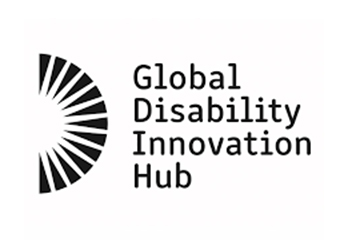Global Disability Innovation Hub

The Global Disability Innovation Hub (GDIH) is a collaborative organisation, born out of the legacy of the London 2012 Paralympic Games. Bringing together partners connected to the Queen Elizabeth Olympic Park, it works with local communities, academics, experts and disabled people to drive innovation, through co-design and creative thinking. As a founding partner of the Global Disability Innovation Hub, University College London (UCL) alongside the London Legacy Development Corporation (LLDC), Loughborough University (LU), University of the Arts London: London College of Fashion (LCF), Sadler’s Wells, the Victoria and Albert museum, Leonard Cheshire and the Royal College of Art: Helen Hamlyn Centre for Design (HHCD), is committed to supporting the continued growth of a collaborative multi-disciplinary Research Centre focusing on innovative research around disability issues.
Role in the project
- GDIH will lead on the user-centred design work in particular developing the requirements and then helping to validate and test the resulting products.
- GDIH will specifically work with people with complex motor disorders within the living lab we will create, which will be developed in close collaboration with UCL and other partners.
- GDI Hub and The Evelina London Hospital will work with people with hyperkinetic movement disorders in order to establish user personas.
Team Members

Tim Adlam

Associate Professor at GDIH and WP7 Leader
Tim Adlam
Tim identifies and characterises needs, and creates and evaluates technology for living. He is an engineer who has worked in disability and healthcare research and product development for over 20 years. He is currently the Head of Mechanical Engineering at Designability, a UK medical engineering and design charity; and will be joining UCL as an Associate Professor of Disability Innovation in December 2018. Tim’s current portfolio of work includes research into the design and impact of dynamic seating for children with the hyperkinetic movement disorder dystonic cerebral palsy (See KiTE 1 and KiTE 2 below). He was engineering lead for the CHIRON assisted living robotics project (Innovate UK). From 2000 to 2012 he was part of the Designability team pioneering research into assisted living technology for people with cognitive disability (dementia); designing and evaluating technology and user interfaces in the Gloucester Smart House (EPSRC), ENABLE (EU) and Independent (EPSRC) projects; and co-led the NANA project (ESRC) to create technology to measure nutrition and frailty in older people living at home. Other research has been in fracture fixation devices, phantoms for medical imaging, and technology for assessing outcomes in gynaecological oncology. Tim is a chartered engineer (UK Engineering Council / Institution of Mechanical Engineers), Chartered Scientist (Science Council / Institute of Physics and Engineering in Medicine) and registered Clinical Scientist (Health & Care Professions Council). He has a PhD in the design of seating for children with dystonic cerebral palsy (Bath), an MSc in Biomedical Engineering (Surrey), and a BEng in Mechanical Engineering (Brunel).
